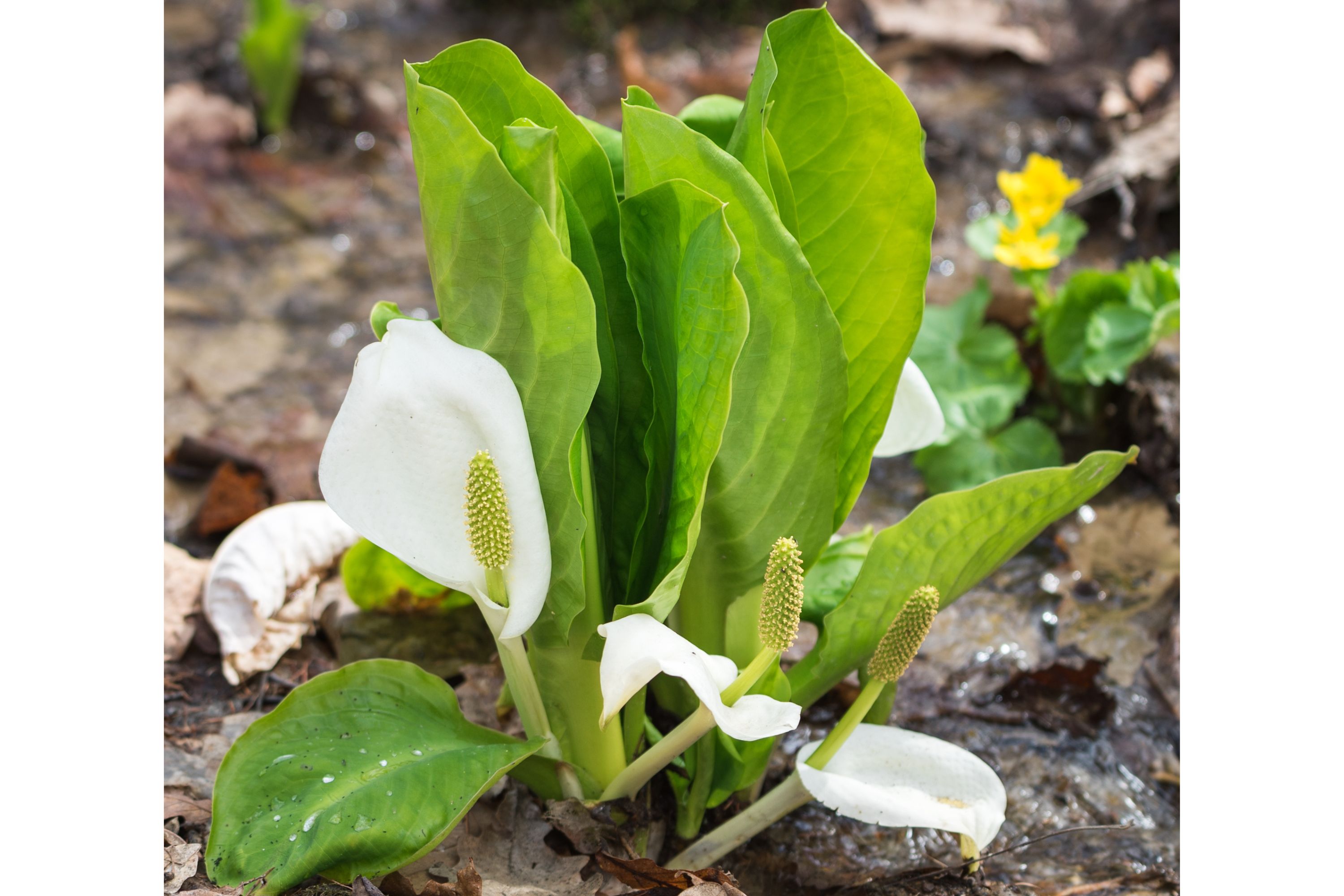Asian skunk-cabbage
(Lysichiton camtschatcensis)

Description
Lysichiton camtschatcensis, common name Asian skunk-cabbage, white skunk cabbage, Far Eastern swamp lantern or Japanese swamp lantern, is a plant found in swamps and wet woods, along streams and in other wet areas of the Kamchatka Peninsula, the Kuril Islands, Sakhalin and northern Japan. The common name "skunk cabbage" is used for the genus Lysichiton, which includes L. americanus, the western skunk cabbage, noted for its unpleasant smell. The Asian skunk cabbage is more variable: plants have been reported in different cases to smell disgusting, not at all, and sweet. In Japanese it is known as mizubashō (lit. "water-banana") from a supposed similarity to the Japanese banana, a name with poetic rather than malodorous associations. It is not closely related to the true cabbage. It is a robust herbaceous perennial growing to 75 cm (30 in) tall and wide, with strongly veined, glossy leaves 50–100 cm (20–40 in) long. In early spring each plant produces a fragrant, pointed white spathe up to 40 cm (16 in) long, surrounding a green spadix. Lysichiton is a genus in the family Araceae. These plants are known commonly as skunk cabbage or less often as swamp lantern. The spelling Lysichitum is also found. The genus has two species, one found in north-east Asia (Japan and Russian Far East), the other in north-west America (Aleutians to Santa Cruz County in California). Lysichiton has flowers which are typical of those of the family to which it belongs (the arum family or Araceae). The individual flowers are small and are tightly packed on a fleshy stem called a spadix which is surrounded by a white or yellow but otherwise leaf-like bract called a spathe. The spathe is hooded or boat-shaped at the top. Lysichiton has flowers with both male and female parts present (bisexual), unlike many other aroids. After fertilization, the green fruits become embedded in the spadix; each fruit usually has two seeds but may have up to four. Several large leaves appear either just before flowering or soon afterwards; each has a short stalk (petiole). Plants die down to a vertical rhizome in winter.
Taxonomic tree:







